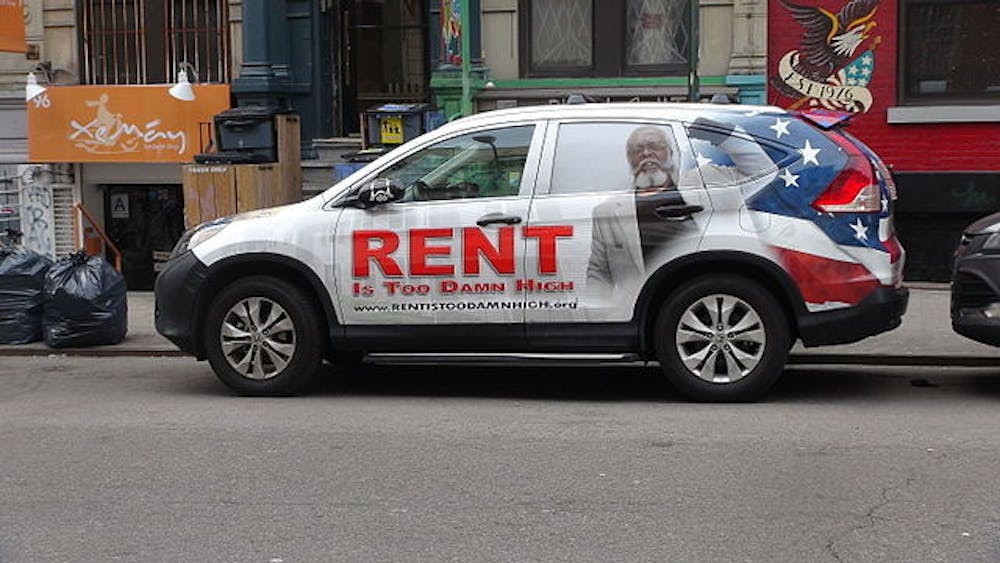In 2010, Jimmy McMillan founded the Rent Is Too Damn High Party and ran for governor of New York. The party’s platform was simple: a single-issue attack on rent prices in the bustling city. While the party (unfortunately) never achieved electoral success, its focus is still relevant to this day.
Between 2000 and 2022, the median monthly rent price increased from $602 to $1,827, a staggering increase of over 300%. At the same time, inflation-adjusted wages have barely budged in the last 40 years, meaning rent is taking up an increasing section of Americans' paychecks as the years go on. In particular, the U.S. has seen a staggering increase in rent after the pandemic, especially in major cities. Rent in Phoenix, Ariz., for example, increased by almost 10% between March 2020 and 2021. Rent does, indeed, seem to be too damn high.
This begs the question: Why is rent so high? One obvious culprit is inflation, which peaked at 8% in 2022 and has remained persistently high since 2020. The buying power of a dollar has decreased by 16% since the pandemic, so it follows that rent would naturally increase in this time. However, that’s not the end of the story: Rent hikes have significantly outpaced inflation and income growth, and rent was already growing faster than inflation before the pandemic. So, what else is causing this?
Another factor in exorbitant rent prices is the decrease in new home construction since the 2000s. In 2006, the number of building permits and new houses under construction fell dramatically, acting as a precursor to the burst of the housing bubble and the Great Recession from 2007–09. New housing construction hasn’t recovered since.
At the same time, demand for new apartments has increased greatly in recent years. This is likely due, in no small part, to the massive increase in mortgage rates, making renting more affordable for many people. As any Economics major can tell you, high demand and low supply result in a price increase; this was further exacerbated by the lack of new housing construction during the pandemic.
So with the statistics out of the way, many are wondering how to decrease these outlandish rent prices. One famous, or perhaps infamous, possibility is rent control. Freezing rent prices so landlords cannot charge above a certain amount may be controversial, but the counterargument is that it works.
For example, over two million people live in rent-controlled apartments in New York. Their median income is only $35,000, and without these controls, many of them could not afford a place to live. Plus, stable housing units have a more positive impact on childhood social development, as they provide stability and safety in children’s lives. Therefore, on a purely humanitarian level, rent control can raise millions of people out of homelessness and improve quality of life.
But beyond that, rent control seems to have little impact on the quantity of rental housing as a whole. Rather, rent control encourages greater condominium conversion and slightly lower rental construction. Even then, condominiums are cheaper than regular houses, dampening the cost to buyers. Thus, overall, rent control would help millions of families be able to afford basic housing while not seriously decreasing the availability of housing.
Another vital solution is increasing public housing projects. The U.S. Department of Housing and Urban Development (HUD) authorizes and funds almost one million affordable rental apartments for low-income individuals. Rent is usually set at 30% of income, which allows housing to remain affordable for those who would otherwise spend a far greater portion of their salary on free-market apartments. It is imperative that the U.S. expands this program; after all, almost half of Americans do not earn enough to afford a one-bedroom rental. In a nation with a gross domestic product comfortably in the trillions, it is the government’s civic responsibility to provide cost-effective housing to those in need. HUD subsidized housing must be expanded to include all people who cannot afford their own housing units. Plus, a greater housing supply would naturally decrease prices in the free market.
But arguably as important as financial support is social support. The newly-introduced Creating Moves to Opportunity (CMTO) project provides “Navigators” who help low-income individuals work through the complex bureaucracy of applying for subsidized housing and give advice on where to move. For people who have never owned a credit card before, this advice is vital: It can be a big difference between knowing your family can apply for subsidized housing and falling behind on a lease. The program is already being tested in Seattle, and it must be expanded nationwide to assist everyone who needs help.
The sad truth is that housing is not, and has not been, affordable for many Americans for some time now. Prices continue to increase well past inflation, but there are clear remedies to the issue. Limited rent control and an increase in affordable housing construction, coupled with Navigator assistance, can help millions of people climb out of housing instability. Rent may always be too damn high, but this would be a start.
Nick Daum is a freshman from Bethesda, Md. majoring in Economics and Applied Math and Statistics.





